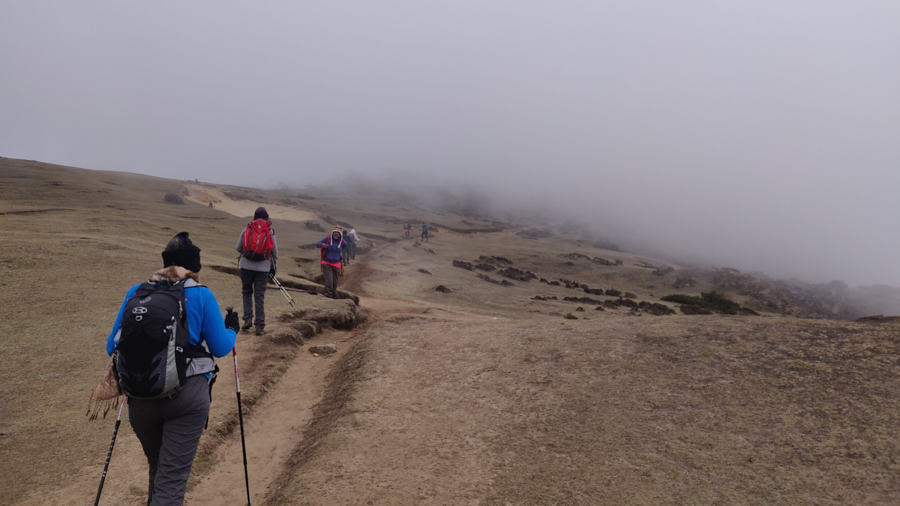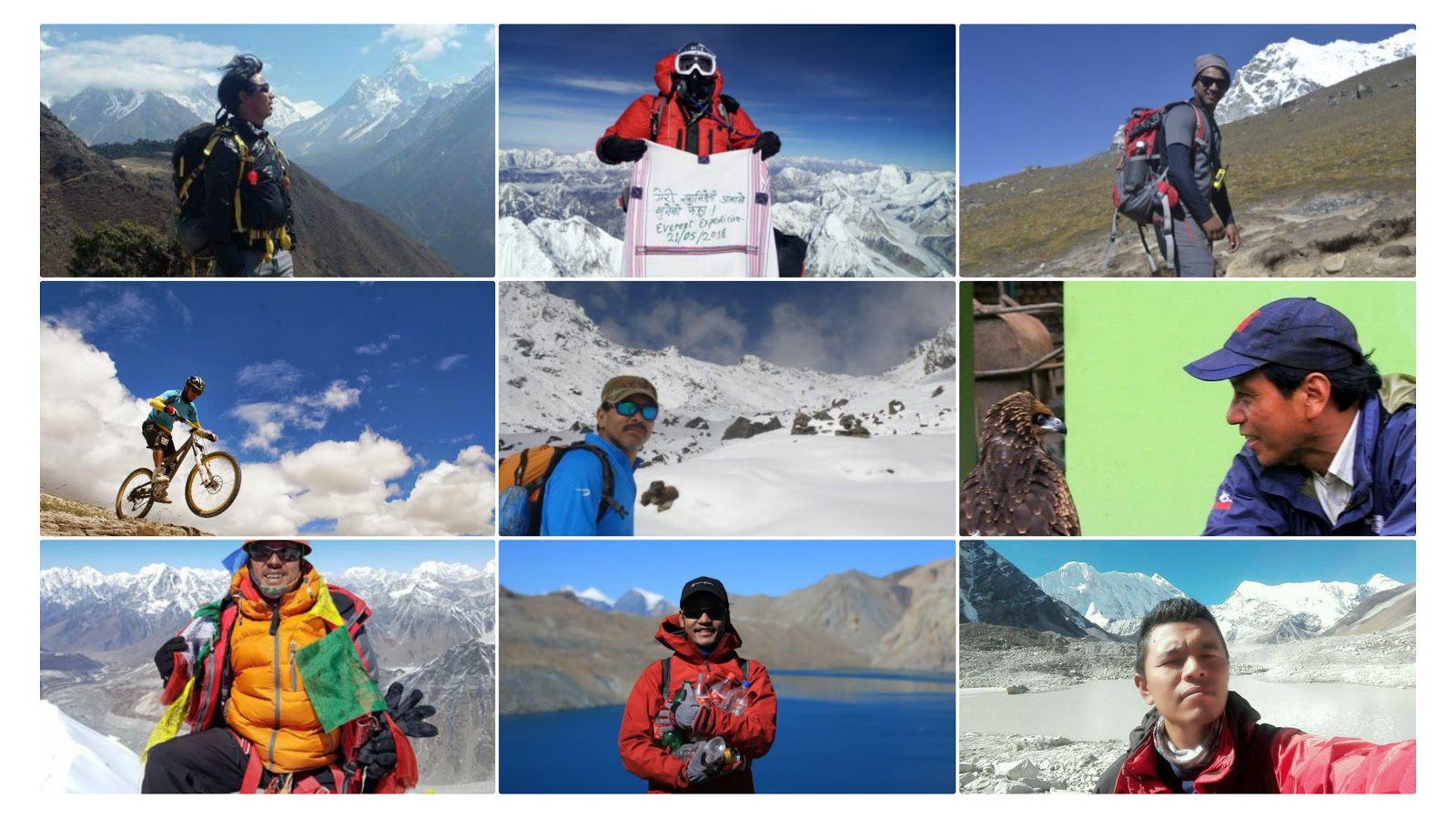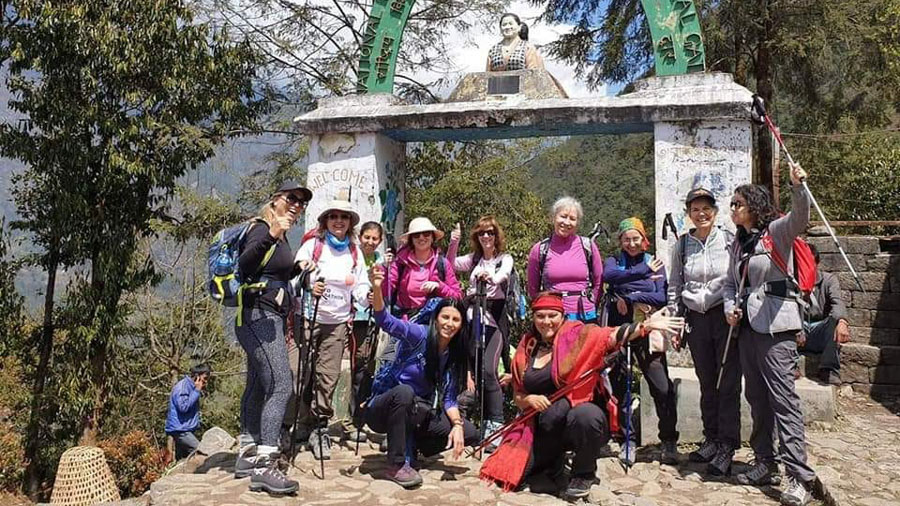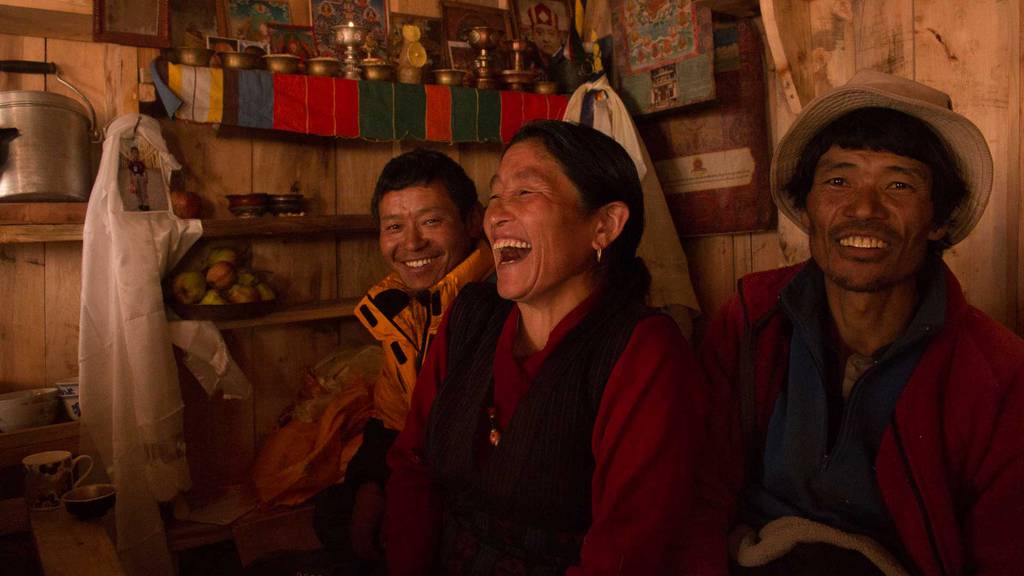
Nepal is a safe trekking destination and is a lot safer than many popular touristy countries. Ever improving tourism infrastructure, availability of tea houses and lodges for shelter, food, and water, telephone connectivity, and Internet access add to the safety standards of trekking in Nepal. In most of the popular trails, trekkers do not usually have to remain stranded in the wilderness for long, before they meet another human or find a place to take refuge.
Perhaps, the danger is more around uncertain weather conditions and carelessness of trekkers on the trail. Nevertheless, few tourists and trekkers go missing every year. Government statistics show that as much as 62 tourists have gone missing in the last six years. Among them, 51 were never found, and 11 were found dead or alive.
However, there is not much to be scared of. It is just a few rare incidents among 1.1 million tourists who visit Nepal every year. If you are lost in the Himalayas, you would hardly get out of the problem. Such incidences can be easily avoided with some precautions and preparations. Nepali tourism authorities have initiated safety measures after recent weather-related tragedies to prevent human casualties on the trail.
Government and tourism entrepreneurs recommend hiring an experienced guide while trekking at high altitudes and avoiding solo treks for inexperienced trekkers in order to reduce mishaps. If you have previous experience of trekking in high altitude, trekking solo is safe with some precautions and prioritization of safety. After all, safety is what counts when it comes to enjoying any adventure.
Is hiring a guide mandatory while trekking in Nepal?

The simple answer is NO. Most of the treks, such as trails in the Everest region, Annapurna region, and Langtang can be easily trekked without a guide. However, few routes are not allowed to trek solo. Manaslu Circuit, Dolpo, Upper Mustang, and Kanchanjangha are some of them. Other trails like Dhawalagiri Circuit is too challenging to trek without the support of a trekking crew. New and extreme routes are always better to trek under professional guidance.
However, Nepal is no longer the destination it used to be in the 1970s. Almost all the trekking trails now have the necessary infrastructure. Popular trails and side trails are well marked and maintained. Satellite maps are available through Google Maps, Google Earth, or Open Street Maps so that you can easily navigate back to safety.
Tea houses and settlements are usually only a few minutes to a few hours of walk apart. The availability of tea houses, lodges and homestays make it easy for spending the night. Nepali hospitality is something you can count on easily. So, it is extremely difficult to be stranded in the middle of nowhere, unless you have an injury or have some medical emergency while you are on your own.
With preparations like making a route plan, knowing the routes, prioritizing safety and staying in touch with someone you know will make it almost impossible to get lost. So, for most treks, hiring a guide is not mandatory, but if you still doubt if you need to hire a guide, you most likely do!
If you want to hire a guide, what are your options?

If you have concluded that you will hire a guide for your next trekking in Nepal, you have more than one option to choose from. You can either hire a guide, a porter, or a mix of both.
Guide
A guide is someone who helps you navigate through the trail. S/he usually speaks English well or your language of choice. Guides become your trek buddy, pathfinder, friend, help you get necessary permits and a first responder in case of emergency. They are also the unofficial ambassador of Nepal for you. They know the terrain, route, mountains as much as they know about people, history and local culture. They are walking talking encyclopedia on Nepal. Professional guides are experienced, trained, and hold a license to perform their duties well. So, make sure you get someone who is experienced and holds a license.
Porter
Porter is someone who carries all of your trekking gears, baggage, and belongings. However, they are not the best option if you need someone to show you the trail. They speak basic English. Porters are usually locals from the trail who make their living from the tourism industry. Their primary duty is to help you carry your heavy bag, gear, or load, up and down the trail. Porters are usually hired along with guides as part of the crew. For safety reasons, they carry loads between 20 and 30 kilograms.
Porter-Guide
If having a crew including guide and porters is overkill for you, guide cum porter is the best of both worlds. Guides usually do not carry your baggage unless you require help. And, porters may not be as skilled as a guide. Guide cum porter will carry your bags and show you the path while in trails. They may not be as highly specialized or skilled as a seasoned guide but will do the job reasonably well and serve a dual purpose. It is likely that they are less experienced than a guide and charge you less for their service. A porter guide can carry up to 15 kilograms.
Where should you hire a guide – on the trail or in Kathmandu?

Both options are possible, and the choice is all yours. When you book your trek package, it most likely includes a guide. If you want to go on your own but take along a guide, you can easily do so. Any travel agency in Kathmandu will arrange your guide, porter or both. If you hire them in Kathmandu, you will have to bear their transportation expenses from Kathmandu. This means, if you are flying to Lukla for trekking in the Everest region, you will have to bear their flight tickets.
You can easily find experienced local guides at the start of the trail. You will find guides in Pokhara for trekking in the Annapurna region, Lukla for the Everest region or other towns at the trailhead. If you do not want the hassle of going after companies and guides, you can also reserve a guide based on their experience, specialization, location, gender, and rates from the comfort of your home using HoneyGuide’s website.
The choice is yours whether to hire a guide in Kathmandu with travel agencies or get someone local. If you are a believer in sustainable tourism, look for the latter.
Perks of hiring a Local Guide

1. Support the local economy
Local guides are usually the residents of villages on the trail or nearby settlements who make their living from the tourism industry.
When you hire a local guide, you will be supporting the livelihoods of someone from the trekking region and their families. While you are happy trekking, you are also contributing a little to the happiness of your guide’s family. Tourism is not only a business for local guides, but it is also a means to fulfill their dreams. Every penny you spend will buy happiness for yourself and your crew’s family.
When you hire a guide from a commercial tour operator from Kathmandu, the company likely keeps a hefty sum and guides could be paid less. And most of the money remains in Kathmandu. Hiring someone local means someone who had walked the trail before tourists came will be benefitted. They deserve to benefit from tourism in their neighborhood as much as a business house earns by showing their place.
2. Know the trail inside out
Local guides are likely to be born and raised on the trail itself. Who else would know better about all the nooks and crannies of a destination? They are also familiar with the recent changes in the path, weather conditions and patterns, and are skilled to maneuver you to safety.
They can show you around the hidden locations, best viewpoints, and share startling facts about local attractions, geography, history, and culture. These guides’ home is your destination. So, they are more sensitive to native people, culture, nature, wildlife, and the environment than any outsider.
3. Connect with the Local Culture
Guides are walking, talking Google of the local culture, traditions, and geography. They will narrate you magical folklore, myths, and real stories from the mountains. They will help you connect you with local families and give a glimpse into their lifestyle and even allow you to experience the mountains as they do. Guides will also tell you or help you experience the local festivals and rituals. They can connect you with locals and interpret the language if required, for memorable cultural experiences while you are in Nepal. Local guides will help you experience the real magic of the culture and lifestyle of the mountains.
4. Value for money
Hiring a guide in Nepal is cheaper than in other parts of the world. On an average, daily rates of a guide are USD 25 to USD 35 and around USD 15 to USD 20 for a porter. The daily rates depend on the experiences, skills, and knowledge, trekking area, and the size of the group. When you hire someone locally, they will join you at the trailhead. This will save the day’s wage and flight or transport costs from Kathmandu. It is cheaper to get someone local for all the services they provide, ensuring better value for every dollar you pay.
We understand your urge to go solo and encourage doing so by taking some precautions and prioritizing your safety. However, we also want your adventure in Nepal to be pleasant, safe, and fun. If guides can help you make your trip safe and memorable, we encourage you to employ them. Do not forget, you are giving back to the community by hiring local guides while you make the most out of your trekking in Nepal.
| Author: Gaurav Aryal Gaurav Aryal is an avid traveler, photography enthusiast, and development professional who feels at home in the mountains. |







